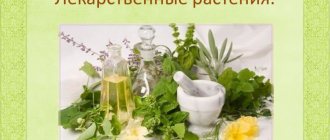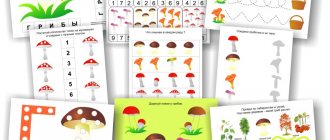The most dangerous plants: parents and children should know so that there is no trouble
It's June on the calendar, which means that nature spoils us with the bright colors of blossoming plants. Early summer is always lush green foliage and all the shades of the rainbow in flowers. Sweet, alluring smells... And how can you resist picking a beautiful bouquet? And then the berries ripen, and a new temptation appears - to try such tasty-looking fruits. And everything would be fine, but among the plants there are those that can become deadly. There are quite a few of them growing in Belarus, but we will focus on the most dangerous ones and those that can be encountered most often.
So, 1st place in the conditional TOP - 5 poisonous plants of Belarus can be safely given to the poisonous plant or, as it is often called, hemlock: confused with celery, parsnip, parsley, etc.
Distinctive features: It has a carrot smell, a reddish coating on the stems, the height of the plant reaches 1.2 m, the inflorescences are double umbrellas, the terminal lobes of the compound leaf are quite long, lanceolate or linear-lanceolate, sharp-toothed along the edge, the inflorescences are double umbrellas, and on In a longitudinal section of the rhizome, oval transverse cavities filled with a yellowish resinous substance are clearly visible. Loves wet places.
All parts of the plant are poisonous, but the most dangerous is the rhizome. This is where the most cicutoxin is found. If it enters the human body with food, it causes severe poisoning with a very high probability of death.
Veh, rhizome
Vekh, general view
In legends, books, and articles, the May lily of the valley is always associated with the most sublime feelings - purity, fidelity, love and tenderness. And outwardly, the lily of the valley seems to be an extremely fragile and delicate creature. But he can easily stand up for himself: lilies of the valley are completely poisonous plants. Even the water in which the bouquet has stood becomes poisonous.
These flowers grow in colonies, having one rhizome for all. The plants are not tall: their stem length is about 20 cm. The leaves are basal, wide, long, have a pointed long blade, lily of the valley flowers are white, located only on one side of the flowering stem and represent from 5 to 20 pleasant-smelling small bells. The leaves of the May lily of the valley are similar to the leaves of the edible and very useful wild garlic, and when collecting it, you can accidentally pick off the leaves of the poisonous lily of the valley. However, it should be remembered that wild garlic is included in the Red Book of the Republic of Belarus and its collection in natural conditions is prohibited (a fine of 20 to 50 basic units is provided).
May lily of the valley
Cheremsha
When the flowers fade, orange lily of the valley berries form, turning red in the fall. The berries are spherical fruits from 6 to 8 cm in diameter, which contain one or two spherical seeds. The fruits are especially poisonous. You can be poisoned by mixing them with other berries, for example, lingonberries or boneberries. The lethal dose for a child is 2–3 berries.
Lily of the valley, berries
Cowberry. Berries
The appearance of the RAVEN'S EYE at the time of fruit ripening is interesting: the berry located in the center seems to lie on a plate of leaves. However, do not put yourself in danger and do not try the tempting fruit. Crow's eye is a completely poisonous plant, the fruits are considered especially poisonous. Most often, the plant manages to “deceive” children, who easily confuse the poisonous delicacy with blueberries.
Crow's eye general view with “berry”
Blueberries, berries
When you come across a clearing with buttercups , you will definitely fall in love - these small yellow flowers bloom so sunny and bright. Italians call ranunculus “golden buttons” because of the bright yellow of the flower’s shiny petals. The affectionate Russian name “buttercup” arose due to the poisonousness (“fierceness”) of the plants, but was imprinted in an affectionate form - for the beauty of the flowers.
Buttercup is a herbaceous plant with an empty, erect stem ranging from 30 to 100 cm in height. Bright golden-yellow flowers are located at the ends of the branches. The basal leaves are palmate, while the stem leaves are simpler.
All parts of this plant are poisonous. Moreover, buttercup is dangerous not only when a toxic substance enters the body. By touching exposed parts of the body or inhaling vapors of some species of the family, you can get itching, blisters, small ulcers, as well as lacrimation, spasms of the respiratory tract, and rhinitis.
If you think that you can only find the next plant in a forest clearing or meadow, then you are deeply mistaken. It can easily grow on the site of a private house, in a city park and in the green courtyard of a high-rise building. Every year forces and means are allocated to fight it, but hogweed - and this is what we will talk about now - still continues to germinate from year to year, causing trouble for people.
All parts of the plant are dangerous - leaves, stems, fruits. The juice of an adult plant (can be about three meters in height), when it gets on the skin, thanks to the substances in its composition, increases its sensitivity to ultraviolet radiation. Even a simple touch is enough for the poisonous juice to get on the skin and, under the influence of sunlight, to form an inflammation similar to a burn. If the juice splashes very abundantly, then blisters filled with liquid form on the skin. They take a long time to heal, leave ulcers, and later spots and scars form. Getting the juice in the eyes can cause blindness. And on a hot, windy day, hogweed can burn even from a distance - separated hairs from the hogweed stem can cause severe burns to the respiratory tract.
First aid if hogweed juice gets on your skin:
- rinse the affected area generously with running water;
- apply a sterile bandage;
- Avoid exposure to direct sunlight for the next 48 hours
- If blisters appear, consult a doctor.
And here is a small list of beautiful but dangerous plants:
— Castor bean is a plant that decorates the gardens of brave gardeners, as well as flower growers who love beauty, but do not know about its properties. All parts of the plant contain ricin, but the seeds are the most toxic. There is no effective antidote for ricin, and the symptoms of poisoning are similar to the common cold. When all organs begin to fail, doctors usually shrug their shoulders.
— Hydrangea, blooming from summer to autumn with lush flowers. Don't even think about chewing them! However, like the leaves. The entire plant is poisonous.
— Foxglove , whose multi-colored bells decorate flower beds. The upper leaves contain high concentrations of hazardous substances. Toxic to both people and pets.
— Oleander is a beautiful lush shrub with fragrant small flowers. The whole thing is poisonous. Even one leaf can cause serious poisoning in a small child, problems with cardiac and nervous activity.
— Elderberry is red and herbal (not black) - their leaves and roots, and especially the berries, are very poisonous.
— Forest or common honeysuckle. Often planted as an ornamental plant. Also called “wolf berry”. Its beautiful red berries ripen in July-August. Inedible, very poisonous.
- Wolf's bast - in which not only the bright red berries are poisonous, but also the bark, flowers, and leaves.
— goldenrod — blooms in July-September. Causes a severe allergic reaction; its seeds are considered an extremely aggressive allergen.
- Belladonna or Belladonna - as well as “sleepy stupor”, “mad berry”, “rabid”. Perennial tall herbaceous, very poisonous plant. Belladonna berries make a person very excited, even rabid. They are especially dangerous for children - most often they die from these delicious and sweet-tasting berries.
- Henbane - large serrated leaves, dirty yellow flowers with purple veins, a thick stem with thin fibers - this is what the plant looks like. It blooms and bears fruit in June-August. All parts of the plant are poisonous.
When leaving, you must rinse your stomach (drink a lot of liquid with adsorbents) and call an ambulance.
The main rule : if you are not sure of the safety of “communication” with representatives of the flora, then it is better not to touch such plants and avoid them.






